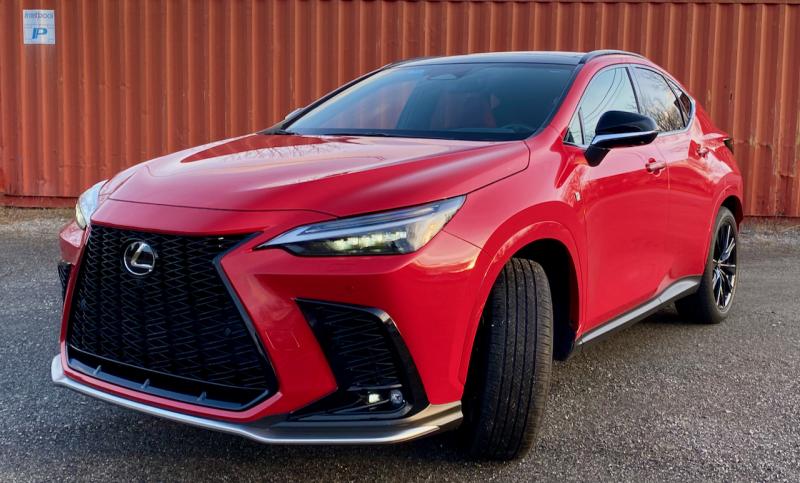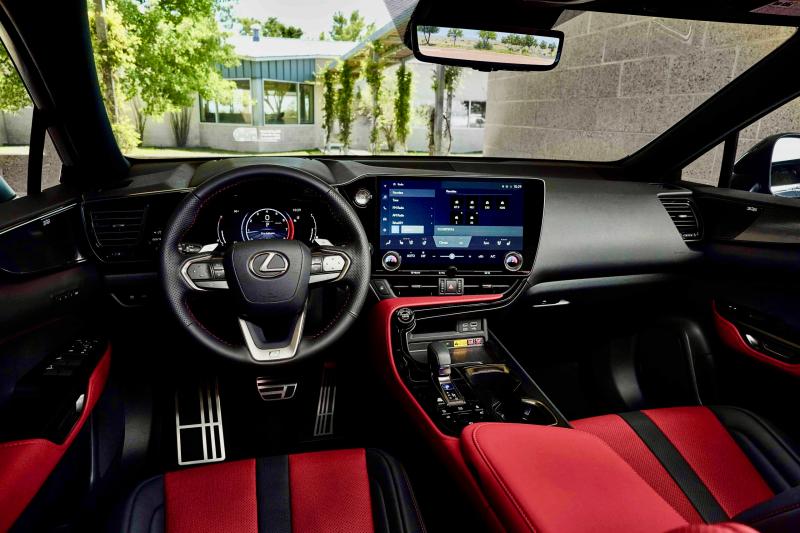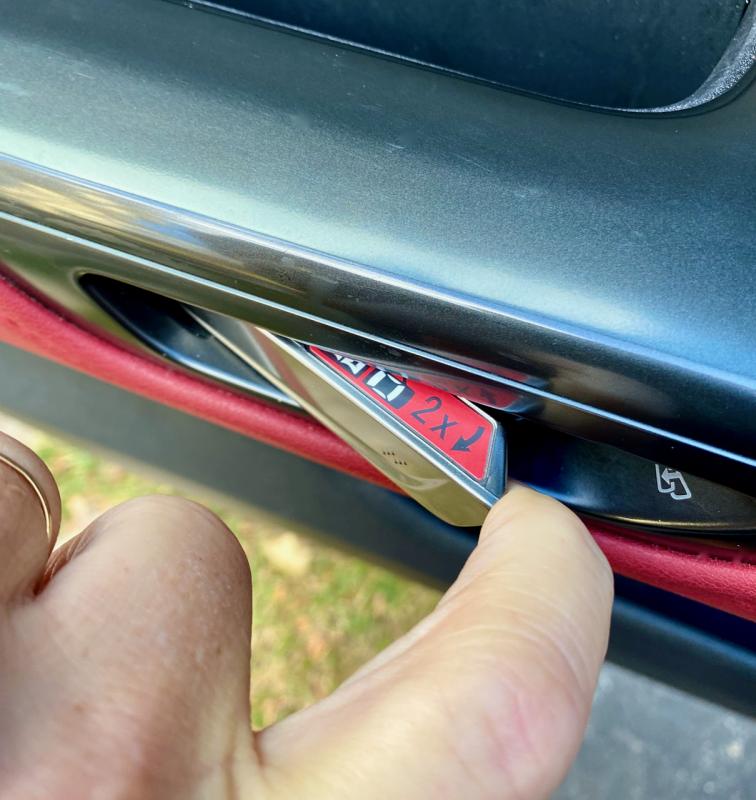Lexus NX350 AWD F Sport
 Redline red adds a Christmassy touch to the NX350 F Sport.
Redline red adds a Christmassy touch to the NX350 F Sport.
 The new HMI, Human Machine Interface, screen offers Concierge Service as well as links to the Cloud, to smartphones and even to other similarly equipped Lexus vehicles.
The new HMI, Human Machine Interface, screen offers Concierge Service as well as links to the Cloud, to smartphones and even to other similarly equipped Lexus vehicles.
 A door latch that requires instructions: is this a step forward in the name of safety or needless obfuscation and change for the sake of change?
A door latch that requires instructions: is this a step forward in the name of safety or needless obfuscation and change for the sake of change?
 Redline red adds a Christmassy touch to the NX350 F Sport.
Redline red adds a Christmassy touch to the NX350 F Sport.
 The new HMI, Human Machine Interface, screen offers Concierge Service as well as links to the Cloud, to smartphones and even to other similarly equipped Lexus vehicles.
The new HMI, Human Machine Interface, screen offers Concierge Service as well as links to the Cloud, to smartphones and even to other similarly equipped Lexus vehicles.
 A door latch that requires instructions: is this a step forward in the name of safety or needless obfuscation and change for the sake of change?
A door latch that requires instructions: is this a step forward in the name of safety or needless obfuscation and change for the sake of change?
The first touchpoint on any car is the door handle: Is it easy to find, nicely sculpted, comfortable? Does the door open promptly, seamlessly? Can we just grab and go? The door handles of this Lexus look normal, but they don’t pull out to undo a mechanical latch—they’re electronic.
Fingers must hit a touch-sensitive pad just so in order to activate a switch that operates an electric door latch. We have to stop, think, maybe reposition our grip until there’s a muted click! and, a heartbeat later, the door finally opens. Something we never had to think about before has become an obstacle.
Those are the outside door handles. The inside handles, besides being small, difficult to find and awkward to use, have printed instructions! Pull twice! Lexus touts this Digital Latch system as a safety feature because it works with something called Safe Exit Assist, which scans the street for approaching cars or bikes that might crash into an open door.
Owners, as opposed to short-term test drivers, have time to get used to such foibles. But after last week’s complaining about touch-sensitive controls, this felt like further vindication. Until, that is, I got to the switches in the steering wheel. These operate the onboard computer (no more joystick on the center console), the display screens, the sound system, the interactive cruise control and the lane-following system.
There’s a lot going on there, and these little buttons are touch-sensitive too. But—and this is a big but—passing a thumb over each one brings up an explanation in the driver’s panel in the windshield: This is your Lane-Tracing Assist—and it’s off! Bless you, Lexus. This is the best use of touch-sensitive tech I’ve seen yet in a motor vehicle.
Other expanded uses of technology include a digital rearview mirror and a high-def backup camera, part of a next-gen suite of features called Lexus Safety System+ 3.0. For example, in addition to braking to avoid a frontal collision, 3.0 will also brake automatically if the vehicle turns left or right in front of an oncoming obstacle—another vehicle, a bike or a pedestrian. There’s also Dynamic Radar Cruise Control with Curve Speed Management, which helps maintains steady a flow in traffic and on winding roads.
The NX buyer has a choice of no fewer than four drivetrains, from a 203-horsepower 2.5-liter Four (in the NX250, available with front- or all-wheel drive) to two hybrid options: an NX350h and a 302-horsepower NX450h plug-in, which provides 30-some miles of in-town driving on batteries alone. Our mid-range gas-only NX350 has a 275-horsepower 2.4-liter turbo Four, which, coupled to an 8-speed automatic transmission, provides mid-range performance, neither impressively quick nor depressingly slow.
However, our NX also benefits from the $2,200 F Sport trim, which adds an adaptive suspension system and three driving modes (Eco, Sport, Sport+), and it’s finished in Redline red with blacked-out trim. Altogether, the package feels sporty indeed, especially for Lexus, which tends to emphasize luxury over everything else. The fit, finish and design of the cabin is Lexus-appropriate and, for a subcompact SUV, it is also notably spacious.
Lexus being Toyota’s posh brand, well-hidden beneath the NX’s eye-catching sheet metal and deluxe appointments lies the chassis of a RAV 4. However, a RAV 4 starts at about $30,000 and the base price of our NX350 is $46,650. Then, with the $250 Cold Weather package (automatic seat, steering wheel and wiper heat), the $850 headlamp washers and cornering lights, the $1,020 premium sound system and a host of other options, the total comes to $55,325. Ours is a 2022 model, but since the NX was redesigned from the pavement up last year, the 2023s hardly differ.


























